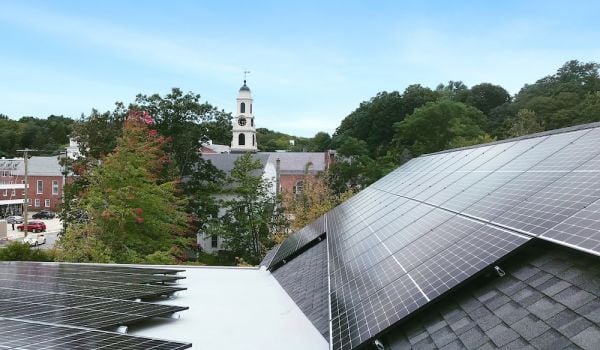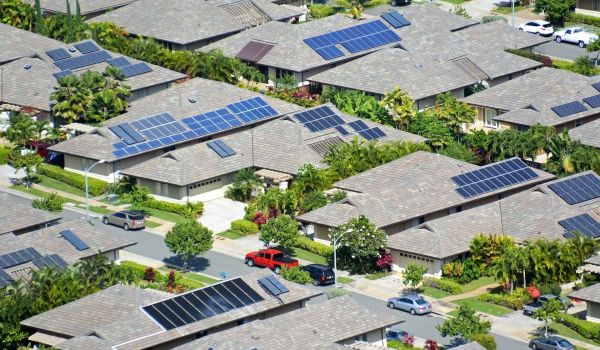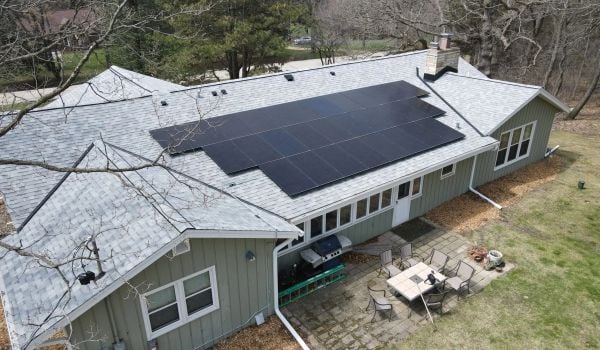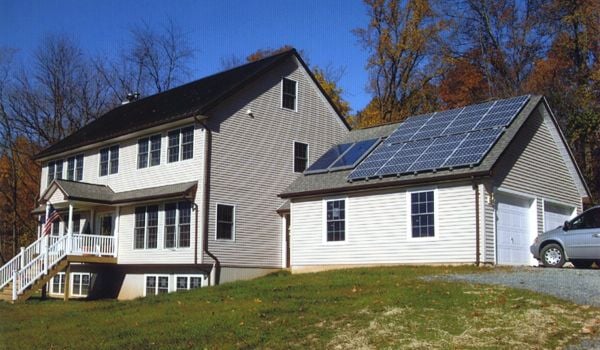Nestled in the heart of the vibrant, diverse neighborhood of Columbia Heights in Washington, D.C., sits the stately Maycroft Apartment complex, home to 64 families. The building is supported by Jubilee Housing, a nonprofit that provides affordable housing for low-income residents.
Unseen to people walking on the street, a series of solar panels lie on the roof of the apartments, converting the sun’s rays into clean, renewable electricity. The electricity then gets channeled into a power grid operated by Pepco (the for-profit utility serving Washington, D.C.), and the value of that electricity is split up among all 100 Maycroft residents, appearing as a credit on their electricity bill. Some downtown buildings have also agreed to donate the value of their solar power to Jubilee Housing residents. The project is supported by Jubilee Housing’s partnership with New Partners Community Solar Corp., a D.C. nonprofit, under the District’s “Solar For All” Initiative.
“Community solar benefits me personally because we receive anywhere between 40 to 50 dollars in solar credits per month because of the solar panels on our rooftop and other New Partners arrays. That is a good situation because that 40 or 50 dollars would be an additional 3 or 4 meals through the course of a week,” says Sam Buggs, a resident of Maycroft Apartments and a board member for Jubilee Housing.
“Oftentimes situations like this exist for people who have resources — the fact that this is being done for people in dire need of assistance is a great thing,” he adds.
Maycroft is also home to a one-of-a-kind “Resiliency Center” that provides residents with a powered community space, which can last for three days in the event of a city-wide power outage. Through a partnership between Jubilee Housing and New Partners, the Resiliency Center is powered by a battery storage system, paired with solar photovoltaics (PV), funded by the Pepco Foundation.
The Resiliency Center provides Maycroft residents a community space with ventilation, lighting, a refrigerator to store food and medicine, and the ability to charge their phones in times of emergency.
Community solar is any solar project in which the electricity generated is shared by more than one property. Customers — individuals, businesses, nonprofits or other groups — “subscribe” to a “share” of the solar plant’s output and in return receive credits on their energy bill for the value of the electricity produced by that share. Community solar happens to be one of the fastest-growing segments of the U.S. solar market.
Community solar allows low-and-moderate income households that cannot afford on-site solar to receive a portion of their electricity from a remote solar project. To date, most community solar is subscription-based, whereby a credit is added to a resident’s electricity bill that reduces the amount normally paid. In Washington D.C., community solar projects have helped residents save up to 50% on their utility bill.
Community solar projects are currently in 39 states and Washington, D.C., with 76% of capacity dominated by states with enabling legislation, such as Colorado, Massachusetts and Minnesota. The National Renewable Energy Laboratory (NREL) estimates that 20 states, plus Washington, D.C., have legislation in place to support community solar. Since 2010, community solar capacity has more than doubled on average year over year.
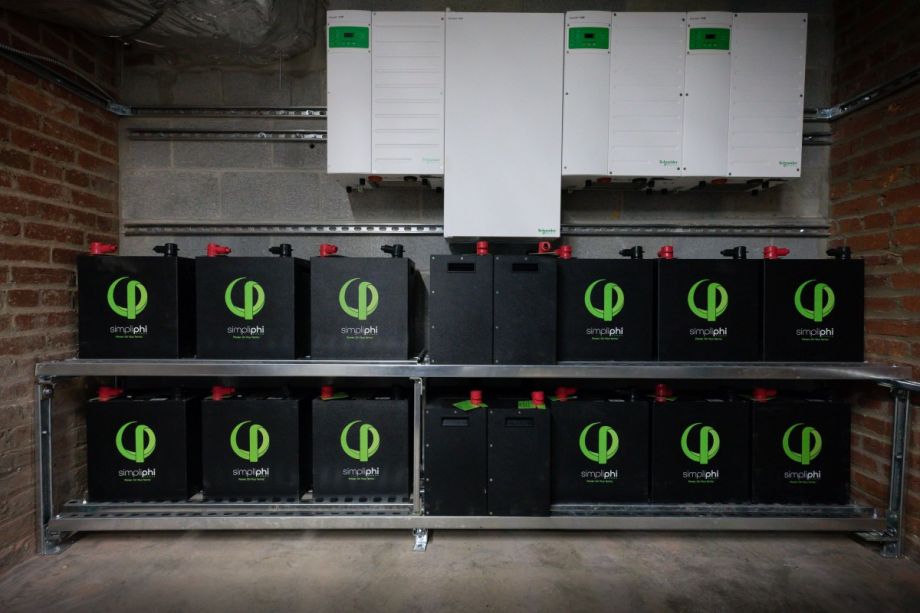
The battery storage system at the Maycroft (Photo courtesy Jubilee Housing)
City governments across the country have also introduced some innovative policies for community solar. According to Jenny Heeter, a senior energy analyst at NREL, “The area where we do see a lot of interest in cities is with those that have their own municipal utilities which are controlled by the city. As a result, we have seen some innovation in those utilities offering Low and Moderate Income (LMI) community solar.” Although Washington, D.C. doesn’t have its own public utility, it has channeled funds through the D.C. Sustainable Energy Utility (DCSEU) for innovative energy programs.
“Washington, D.C. is at the top of the list and they operate like a state in many ways. Their programs are comparable to programs we see in other states,” she adds.
For example, in 2016, Mayor Muriel Browser launched the “Solar For All” initiative which aims to bring locally generated, clean energy to 100,000 low-to-moderate income families in the District. As part of the initiative, the D.C. Department of Energy and Environment (DOEE) partners with the DCSEU and other organizations to develop community solar projects for low-income renters, such as the project on the roof of the Maycroft.
Funded by the Renewable Energy Development Fund, which itself is funded by fees charged to electricity suppliers, the program aims to reduce the energy bills for low-and-moderate income renters in the District by 50% by the year 2032.
For Martin Mellet, Vice President of Jubilee Housing, the expansion of solar energy for low-income renters in the District can largely be attributed to the progressive, climate-friendly policies promoted by city leaders.
“The city wants to be a green city…one of the reasons that community solar is working so well and growing is that the requirement to produce locally generated renewable energy — with a specific solar carve-out — continues to grow.”
Funding for community solar can come from various avenues, including grants from private foundations as well as from state and city governments, with states providing most of the financing for community solar initiatives.
A revolving fund is another innovative financing mechanism whereby the electricity cost savings from one renewable energy project go towards paying another solar project, thereby creating a “pay-it-forward” model for solar energy.
Finally, tax incentives are a viable avenue for funding community solar projects. There are several federal tax incentives that may be applied to support community solar initiatives. These include business energy tax credits, qualified tax credit bonds, clean renewable energy bonds, and qualified energy conservation bonds.
Some states also offer tax incentives for renewable energy, such as Utah, which offers a residential income tax credit for participants connected to a community solar energy project. In addition, many states offer sales tax incentives for solar facilities in the form of reduced rates and rebates.
Ensuring that low-to-moderate income communities have access to solar power will require overcoming several barriers, such as language barriers, the need to educate community members, and a lack of trust between these communities and solar developers.
According to NREL’s Heeter, LMI communities “are often overlooked when solar developers are trying to sell products… they may be less familiar or knowledgeable about how solar works. How do you explain this complicated program which will save people money in a way that they fully understand what they are getting?” she says.
She recommends that solar developers partner with nonprofit organizations working directly with communities, as these nonprofits are best equipped to educate these communities about the benefits of renewable energy.
For community solar customers such as Sam Buggs, relying on locally produced renewable energy has not only given him a discount on his utility bill, but it has also educated him about the realities of climate change.
“Using solar panels allows me to feel better about the small contribution we are making. How can we not be aware of what we are doing to this planet? I am aware of the fact that we are changing our carbon footprint.”
This article is part of Financing Our Green Future, a mini-series examining the behind-the-scenes roles green banks play in making a more sustainable world. This series is generously supported by the Solutions Journalism Network.
Ambika Chawla is a climate policy writer and journalist.

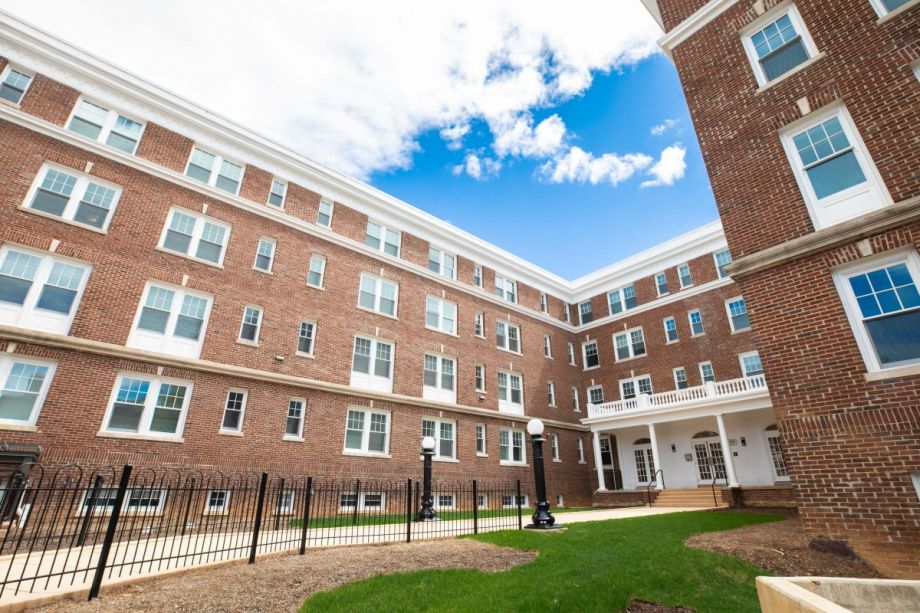
_600_350_80_s_c1.jpg)
